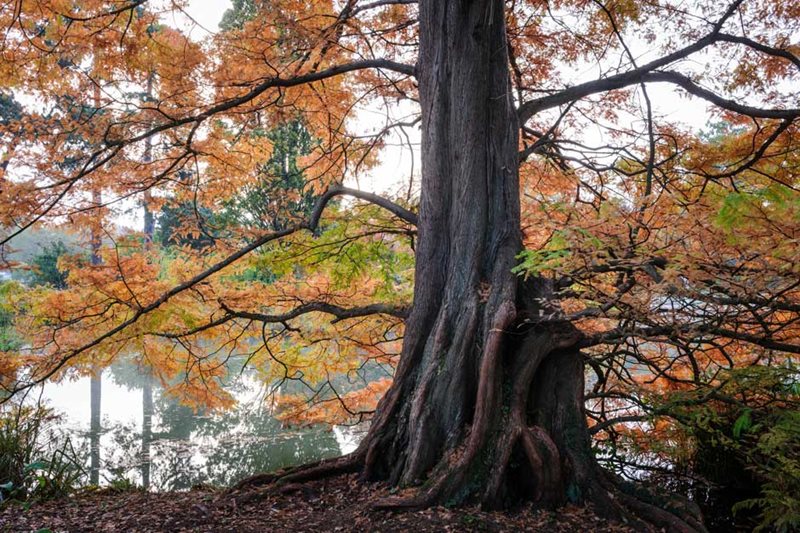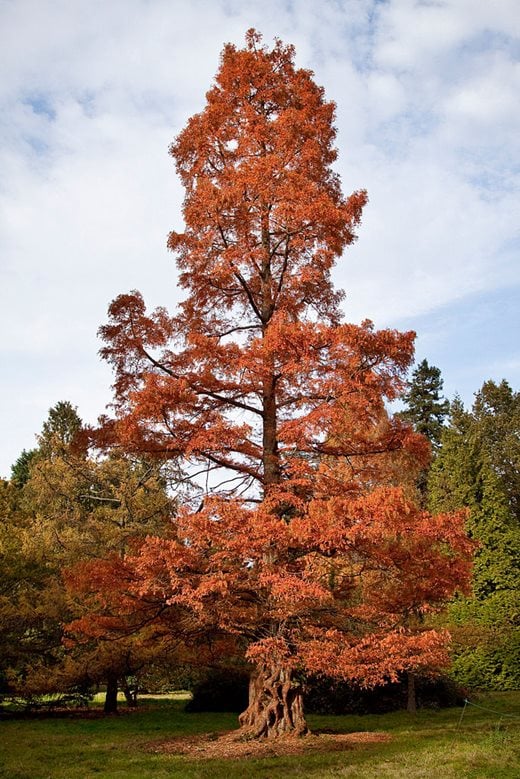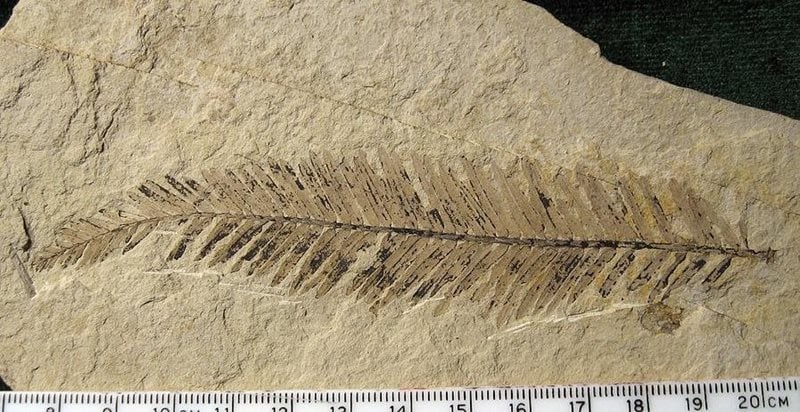From 1940s China a chance find emerged that was to stun the world. The dawn redwood was known only from fossils – and was thought to have been extinct for millions of years. RHS botanist James Armitage traces its history

| Listen now |
|
RHS Gardening Podcast
Highlights of 2018 Special (item starts at 24:40) |
 A fine specimen of dawn redwood, Metasequoia glyptostroboides, in the Wisley Pinetum. This is one of 14 trees growing in the garden that were raised from seed of the “living fossil” when it was first distributed in 1948.
A fine specimen of dawn redwood, Metasequoia glyptostroboides, in the Wisley Pinetum. This is one of 14 trees growing in the garden that were raised from seed of the “living fossil” when it was first distributed in 1948.
The following year the new People’s Republic was founded and the so-called Bamboo Curtain came down, cutting China off from the West for the next 30 years.
A fossil showing the imprint left by a branchlet of a species of Metasequoia which displays a remarkably close resemblance to the species that survives today. Conifers in general show a relict distribution, surviving in small pockets of what was once a much wider range as flowering plants have come to dominate their former habitats. However, the finding of the dawn redwood alive and well in China was a botanical sensation unequalled until the discovery of Wollemia nobilis in the Blue Mountains of Australia in 1994.

 Professor Hu Hsien-Hsu (left) (1894-1968) as a young man. Hu was to become regarded as the founder of modern plant taxonomy in China and is credited with making the connection between the genus Metasequoia, known only from the fossil record, and a living specimen collected from Hubei Province.
Professor Hu Hsien-Hsu (left) (1894-1968) as a young man. Hu was to become regarded as the founder of modern plant taxonomy in China and is credited with making the connection between the genus Metasequoia, known only from the fossil record, and a living specimen collected from Hubei Province.
The man standing beside Hu is his friend, the reformist philosopher and essayist, Hu Shih.
 Elmer Merrill (1876-1956) in California in the late 1920s. A prolific botanist and student of the Asian flora, Merrill received the first large consignment of Metasequoia seed to be dispatched from China.
Elmer Merrill (1876-1956) in California in the late 1920s. A prolific botanist and student of the Asian flora, Merrill received the first large consignment of Metasequoia seed to be dispatched from China.
He further distributed this seed to gardens far and wide and from it were raised the large trees that grow at Wisley today.

Bodnant House, ancestral property of Charles McLaren, 3rd Baron Aberconway (1913-2003), President of the RHS for over 20 years. As a noted horticultural enthusiast, McLaren was sent Metasequoia seed by Charles Merrill – some of which he passed on to Wisley, forging the final link in a chain leading from a lost valley in China and spanning half the globe. The Bodnant estate is now under the care of the National Trust and is still famed for its beautiful gardens.
See also

